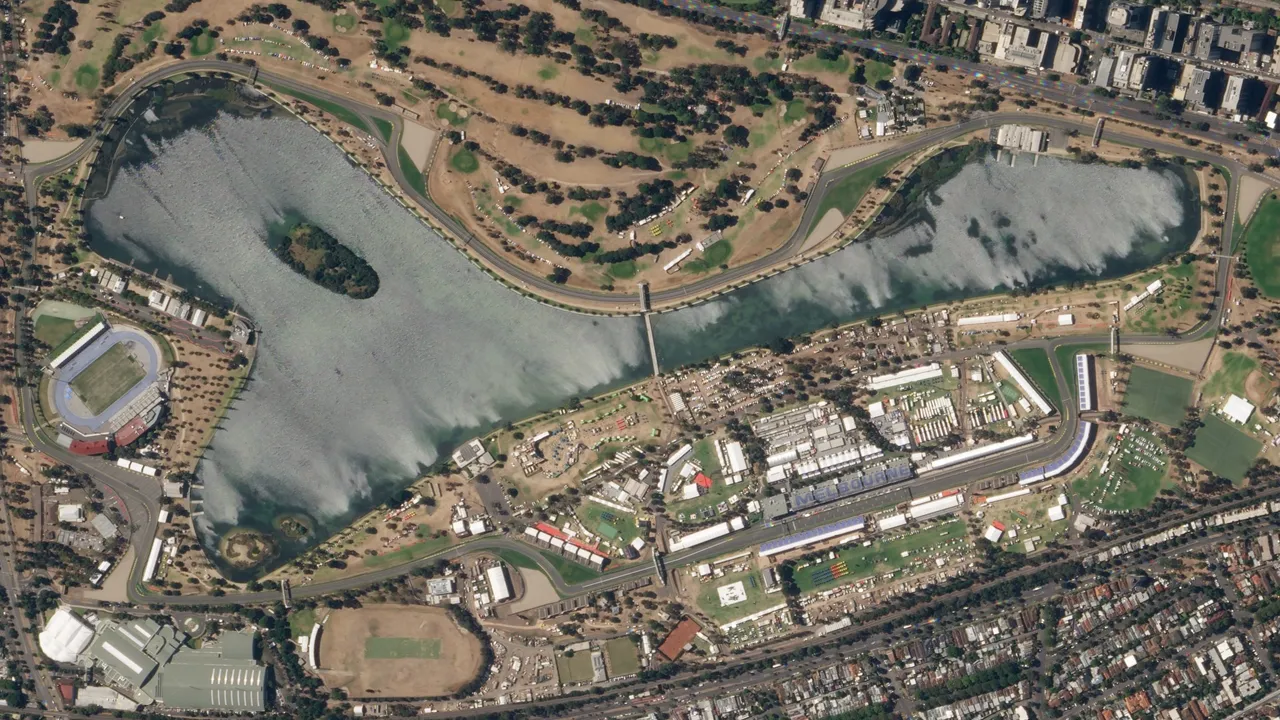El que fuera el circuito inaugural del calendario por un buen tiempo, será ahora la sede de la tercera fecha de la temporada 2022 de la Fórmula 1. El circuito de Albert Park, ubicado en Melbourne, Australia, nos trae novedades en 2022. Y ahora, al igual que varios de los circuitos que hemos ido abordando desde 2020, nos compete analizar el trazado australiano para ver qué nos trae y qué lo diferencia de los demás circuitos.
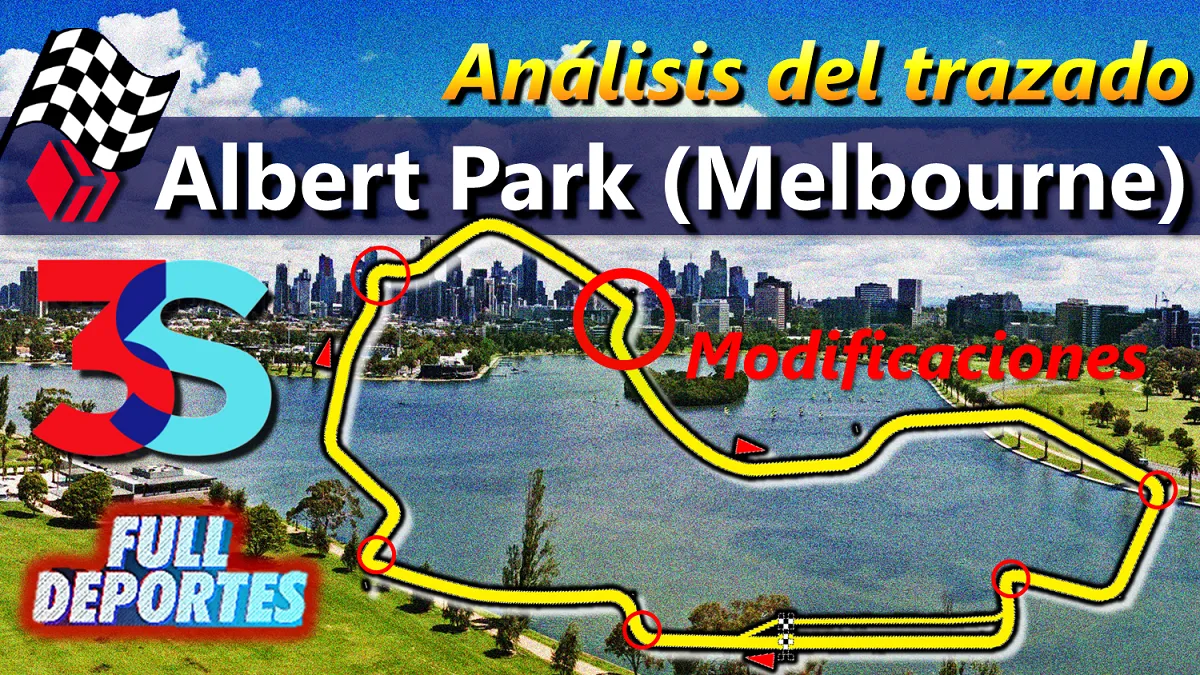
Australia fue la primera fecha durante un buen tiempo, y los que seguimos la Fórmula 1 desde los tiempos de Michael Schumacher en Ferrari estamos algo acostumbrados a ver a Melbourne como carrera inicial del campeonato. Sin embargo, a gusto personal, este circuito quedaría mejor en las últimas fechas, aunque quizás muchos otros fanáticos no estarían de acuerdo conmigo. Es un circuito muy interesante, pero no me agrada del todo como primera carrera.
Quizás con los cambios realizados a su trazado, esta percepción personal podría cambiar.
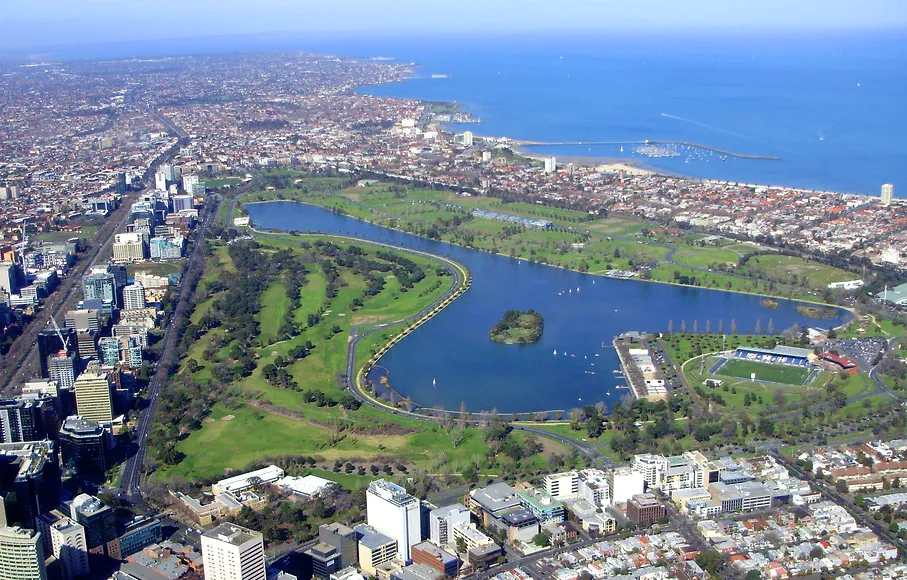
Datos generales
El circuito de Albert Park mide 5,30 Kilómetros de longitud. Es un circuito urbano, dentro de la ciudad de Melbourne, y ubicado muy cerca del mar (detalle importante). Sin embargo, no es un circuito urbano convencional. Entra en la categoría de circuito híbrido, ya que sus calles se utilizan tanto para tránsito vehicular como para carreras. Pero también tiene zonas específicamente diseñadas para carreras de autos.
Una característica especial de este circuito, al igual que el de Montreal, en Canadá, es que no es un circuito urbano de barreras cercanas como Mónaco o Jeddah. Tiene muchos espacios para escapatorias, tanto de grama como de asfalto. También tiene barreras muy cercanas, pero no en la totalidad del trazado.
Otra característica que vale la pena mencionar es que todas o la mayoría de sus tribunas e instalaciones utilizadas en las carreras no están presentes durante todo el resto del año. El circuito y sus tribunas es "armado" para solo un fin de semana. Ante la ausencia de las barreras laterales de la pista y estas instalaciones, algunas zonas del circuito podrían parecer irreconocibles durante el resto del año.
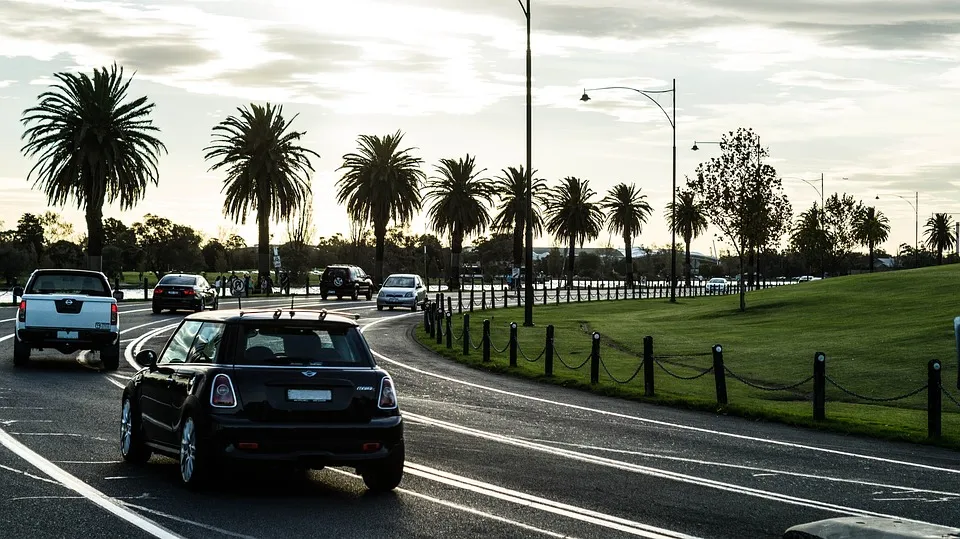
Análisis del Trazado
Pasando a detalles más técnicos del circuito, podemos resaltar los cambios que sufrió el trazado en 2021, y las diferencias entre el actual, a estrenarse en 2022, y el anterior, utilizado desde 1996 a 2019.
Trazado 2022:
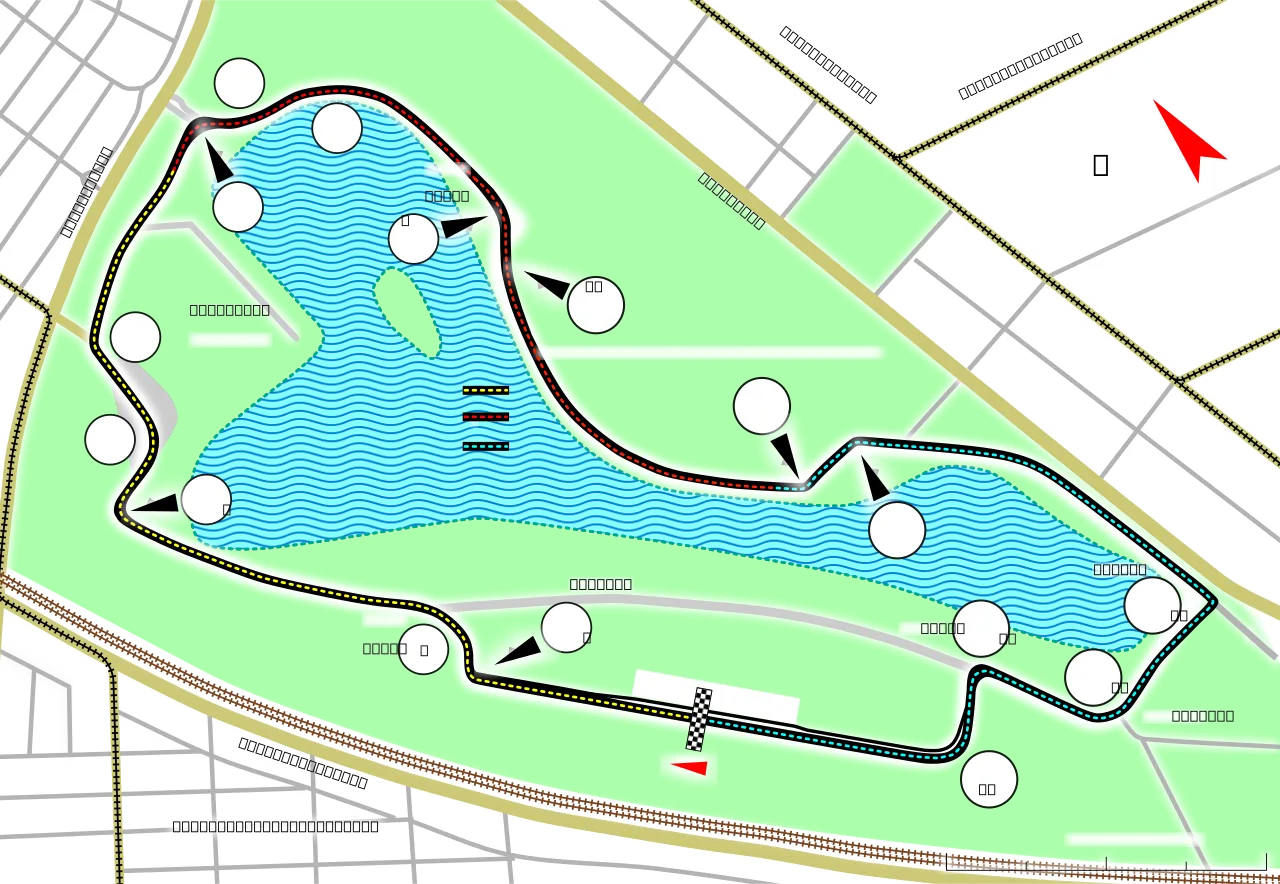
Trazado de 1996 a 2019:
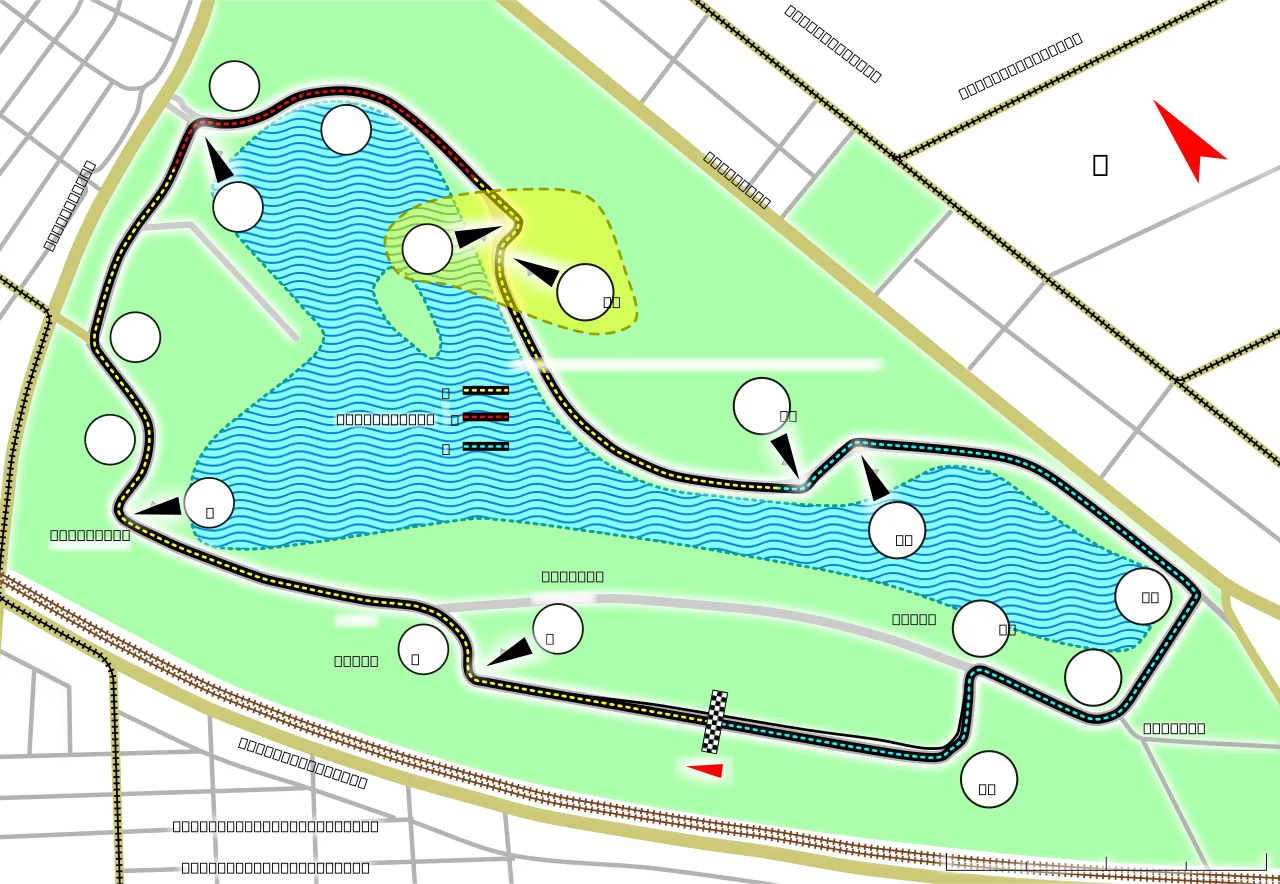
Arriba el trazado antiguo, y abajo el trazado modificado para 2022.
Podemos comenzar hablando del trazado original, utilizado hasta 2019. Albert Park siempre fue lo que comúnmente llamaríamos un "circuito muy técnico". Podría decirse que Melbourne se caracteriza por dos cosas: ser muy técnico y ser muy veloz.
"Situarse y salir disparado..."
Los pilotos describen este circuito como un "trazado para situarse y salir disparado". Y esto queda reflejado muy claramente con su primera curva. Esta curva vincula dos rectas largas, y no es precisamente una curva lenta, sino que los autos deben frenar moderadamente para situarse, girar, y salir "disparados" a la siguiente recta. Esto también lo vemos en cierta medida en otras zonas del circuito, como la curva 6 y las curvas rápidas en zigzag que tanto caracterizan a este circuito.
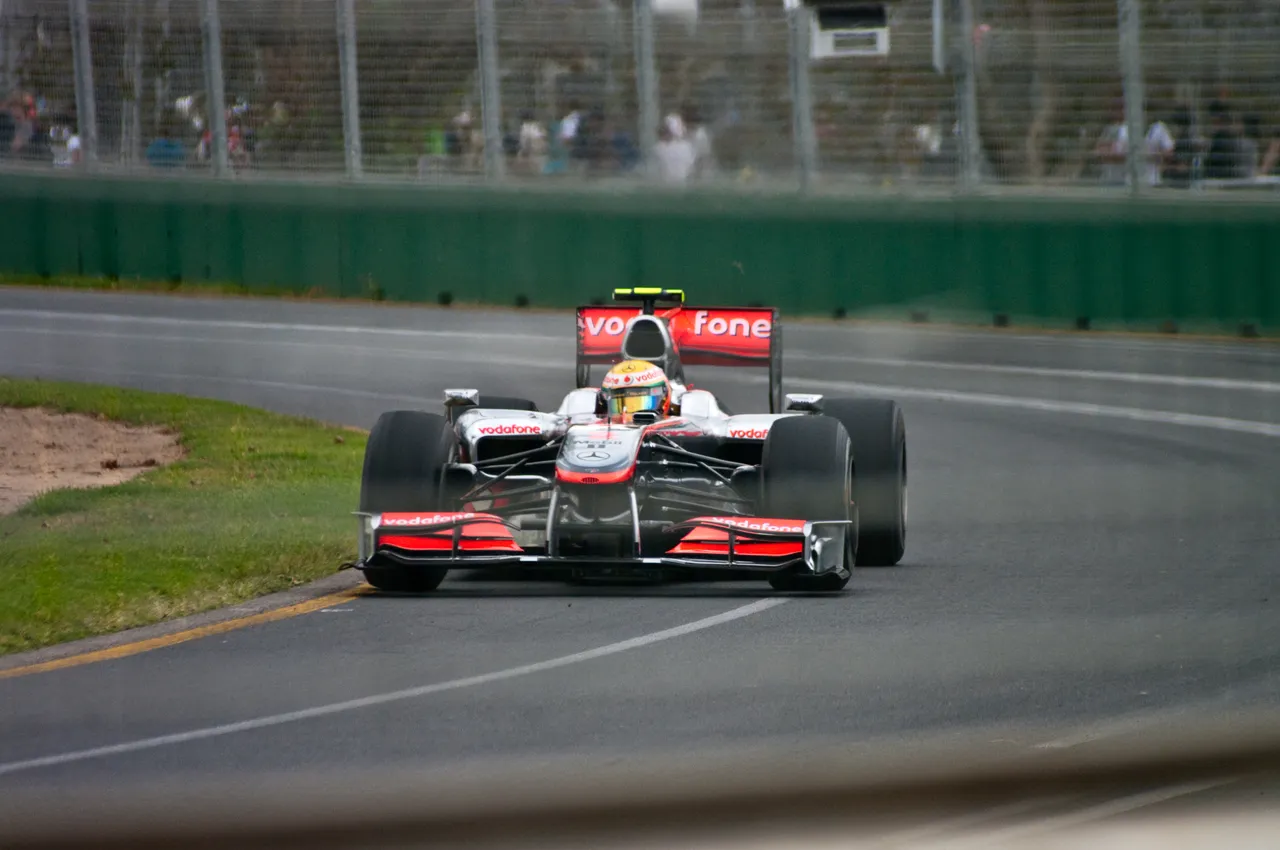
Estas curvas para situarse y "salir disparado" sirven para adelantar o para construir el adelantamiento en la siguiente curva, aunque en realidad suelen servir más para esto último. Estas curvas 1, 6 y 11-12 anteceden justamente a zonas de aceleración a fondo, en donde los autos llegan a la siguiente curva (3, 9, 13) a altas velocidades.
Por otro lado, es (o era) un trazado muy técnico. No solo posee zonas rápidas, sino que posee zonas de velocidad media-baja, en donde los pilotos deben maniobrar a través de curvas más cerradas y lentas. Las curvas 3-4-5, la antigua chicane 9-10 o las últimas 4 curvas del circuito (13, 14, 15 y 16) son ejemplos de esto. Zonas que suelen brindar pocos adelantamientos y es más importante el apoyo mecánico del auto por sobre la velocidad.
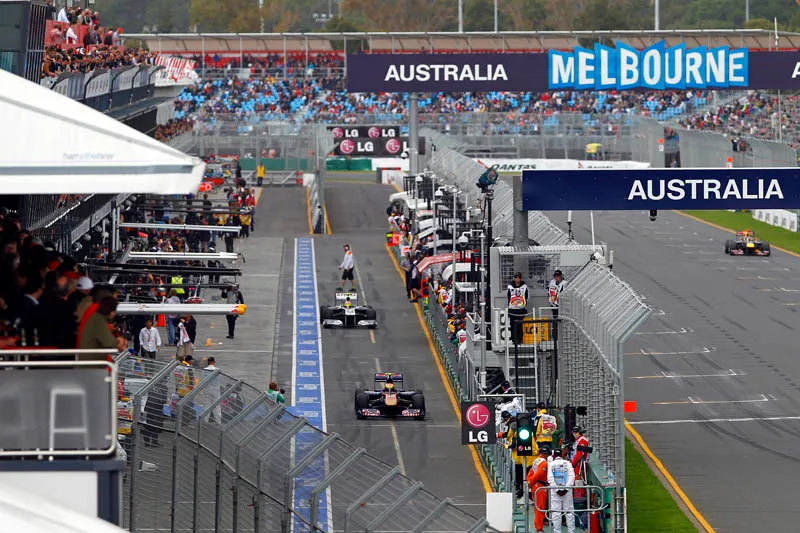
Número de curvas por Kilómetro

Antes de iniciar la presente temporada 2022 abordamos un video en donde se hablaba de la comparación del N° de curvas por Kilómetro de todos los circuitos de Fórmula 1 actuales.
Albert Park se situaba en el tercio inferior, siendo un circuito con 3.02 curvas / Km de circuito. Es decir, es un circuito más parecido a Monza (1.90, ubicado al fondo de la lista) que a Mónaco (5.69, ubicado en el tope de la lista).
Esto quiere decir que Albert Park es un circuito relativamente rápido, y obviamente lo es, solo que es más "trabado" que Monza. Este número (curvas/Kilómetro) no es un indicativo de qué tan fácil sea adelantar o qué tanto espectáculo se de en un circuito, pero da una idea de que tan "trabado" es (Losail, aunque no lo pareciera, sería menos "trabado" que Albert Park).

Hay que destacar que Albert Park no es un circuito donde veamos muchos adelantamientos. Es difícil hacerlo en sus zonas más técnicas y lentas, y en las zonas más rápidas sucede que adelantar no es sencillo, y por ello, una medida para 2022 ha sido la de ensanchar algunas curvas y eliminar algunas o "suavizarlas".

Cambios de 2022
Albert Park busca en 2022 dar mayor espectáculo, mediante cambios importantes en su trazado. La Fórmula 1 parece seguir una tendencia de "suavizar" circuitos u optar por curvas más redondeadas y rápidas en muchos de los casos últimamente, volviendo más a la esencia de los circuitos clásicos.
Y así ha ocurrido al eliminar la chicane de las curvas 9-10 del trazado anterior. Esta zona reducía drásticamente la velocidad de los autos, y no aportaba realmente tanto espectáculo en carrera. Ahora, será una zona rápida de aceleración a fondo, los autos ya no reducirán su velocidad tan drásticamente sino hasta la curva 13.
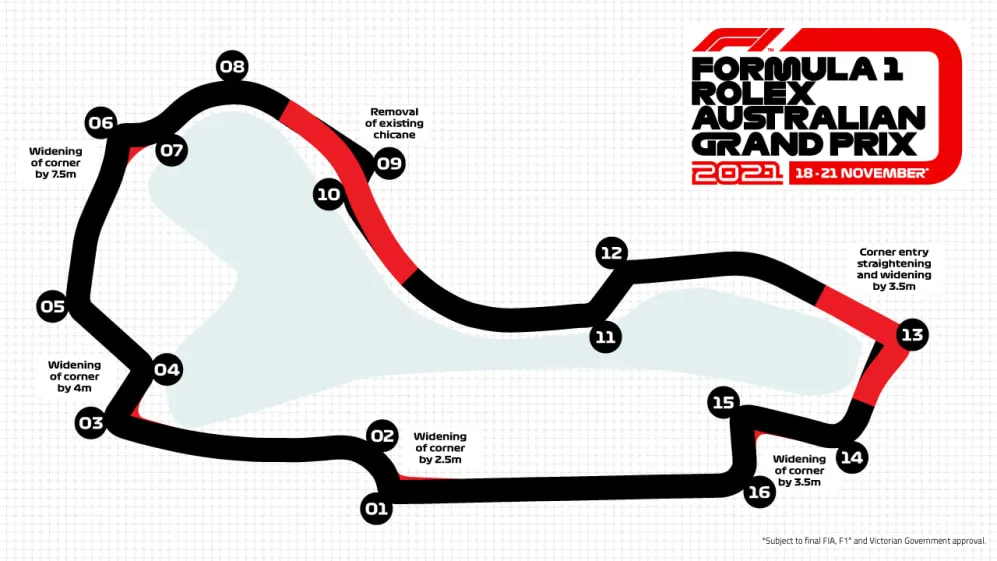
Las curvas 1, 3, 6, y 15 fueron ensanchadas o "ampliadas" hacia dentro. Esto las hace más redondeadas. La curva 1, por ejemplo, permitirá el ingreso más "cómodo" de los autos en ella, quizás fomentando más adelantamientos. Y el cambio quizás más importante de estos será en la curva 6, más de 5 metros hacia adentro, haciendo que los autos entren a mayor velocidad a la zona de aceleración a fondo, la cual durará más de 15 segundos, antes de llegar a una curva en zigzag muy rápida de izquierda a derecha. Esta curva quizás podría brindarnos muchos más adelantamientos que antes.
La curva 13 será otro punto importante para adelantamientos, ya que quizás los autos lleguen allí a mayor velocidad que antes. A diferencia de las otras modificaciones, esta curva será más pronunciada, menos redondeada que antes. Será una curva para frenar a fondo luego de transitar más de medio circuito casi a fondo, la segunda frenada más fuerte luego de la curva 3.
En resumen, Albert Park es un circuito muy veloz y técnico. Un trazado urbano muy particular que mezcla un poco de velocidad y curvas lentas. Curvas veloces para situarse y salir "disparado", al igual que circuitos como Estambul. Los cambios de 2022 podrían hacer que veamos más adelantamientos que antes, sumado también a los cambios aerodinámicos en los autos. Melbourne es un circuito difícil de comparar con otros, quizás Montreal es lo más parecido, y en menos medida Estambul. Me parece positivo que se apueste por la velocidad en los circuitos, eliminando zonas quizás innecesariamente trabadas, fomentando las luchas en pista.

What was the inaugural circuit of the calendar for quite some time, will now host the third date of the 2022 Formula 1 season. The Albert Park circuit, located in Melbourne, Australia, brings us news in 2022. And now, like several of the circuits we have been approaching since 2020, it is up to us to analyze the Australian track to see what it brings and what differentiates it from other circuits.

Australia was the first date for quite some time, and those of us who have followed Formula 1 since the days of Michael Schumacher at Ferrari are somewhat accustomed to seeing Melbourne as the opening race of the championship. However, to my personal taste, this circuit would fit better in the final races, and perhaps many other fans would not agree with me. It is a very interesting circuit, but I don't like it at all as the first race.
Perhaps with the changes made to its layout, this personal perception could change.

General information
The Albert Park circuit is 5.30 kilometers long. It is an urban circuit, within the city of Melbourne, and located very close to the sea (important detail). However, it is not a conventional street circuit. It falls into the category of hybrid circuit, since its streets are used for both vehicular traffic and racing. But it also has areas specifically designed for car racing.
A special feature of this circuit, like Montreal in Canada, is that it is not a street circuit with close barriers like Monaco or Jeddah. It has plenty of gaps, both grass and asphalt. It also has very close barriers, but not on the whole track.
Another feature worth mentioning is that all or most of its grandstands and facilities used in the races are not present throughout the rest of the year. The circuit and its grandstands are "assembled" for only one weekend. In the absence of the track side barriers and these facilities, some areas of the circuit may seem unrecognizable during the rest of the year.

Track Analysis
Moving on to more technical details of the circuit, we can highlight the changes that the layout underwent in 2021, and the differences between the current one, to be released in 2022, and the previous one, used from 1996 to 2019.
2022 layout:

1996-2019 layout:

Above the old route, and below the modified route for 2022.
We can start by talking about the original layout, used until 2019. Albert Park has always been what we would commonly call a "very technical circuit". You could say that Melbourne is characterized by two things: being very technical and being very fast.
"Get positioned and go fast..."
The drivers describe this circuit as a "set-and-go track". And this is reflected very clearly with its first corner. This corner links two long straights, and it is not exactly a slow corner, but cars must brake moderately to position themselves, turn in, and "shoot out" onto the next straight. This is also seen to some extent in other areas of the circuit, such as turn 6 and the fast zig-zag turns that are so characteristic of this circuit.

These corners to get positioned and "shoot out" serve to overtake or to build the overtaking in the next corner, although in reality they usually serve more for the latter. These turns 1, 6 and 11-12 just precede areas of full throttle acceleration, where cars reach the next corner (3, 9, 13) at high speeds.
On the other hand, it is (or was) a very technical track. It has not only fast zones but also medium-low speed zones, where drivers must maneuver through tighter and slower turns. Turns 3-4-5, the old chicane 9-10 or the last 4 turns of the circuit (13, 14, 15 and 16) are examples of this. These areas tend to provide few overtaking opportunities and the mechanical support of the car is more important than the speed.

Number of curves per kilometer

Before the start of the current 2022 season we discussed a video where we talked about the comparison of the number of corners per kilometer of all current Formula 1 circuits.
Albert Park was in the lowest third, being a circuit with 3.02 corners / km of circuit. That is, it is a circuit more similar to Monza (1.90, located at the bottom of the list) than Monaco (5.69, located at the top of the list).
This means that Albert Park is a relatively fast circuit, and obviously it is, it's just more "twisty " than Monza. This number (turns/kilometer) is not an indication of how easy it is to overtake or how much of a spectacle a circuit is, but it gives an idea of how "tight" it is (Losail, although it might not seem so, would be less "tight" than Albert Park).

It should be noted that Albert Park is not a circuit where we see a lot of overtaking. It is difficult to do so in its slower and more technical areas, and in the faster areas it happens that overtaking is not easy, and therefore, a measure for 2022 has been to widen some corners and eliminate some or "soften" them.

2022 Changes
Albert Park seeks in 2022 to provide greater spectacle, through major changes in its layout. Formula 1 seems to follow a trend of "smoothing" circuits or opting for rounder and faster corners in many cases lately, returning more to the essence of the classic circuits.
And so it has happened by eliminating the chicane of turns 9-10 of the previous layout. This area drastically reduced the speed of the cars, and did not really bring so much spectacle in the race. Now, it will be a fast zone of full throttle acceleration, the cars will no longer reduce their speed so drastically until turn 13.

Curves 1, 3, 6, and 15 were widened or "widened" inward. This makes them more rounded. Turn 1, for example, will allow a more "comfortable" entry of cars into it, perhaps encouraging more overtaking. And perhaps the most important of these changes will be at Turn 6, more than 5 meters inward, making cars enter the full-throttle acceleration zone at higher speed, which will last more than 15 seconds, before reaching a very fast zig-zagging curve from left to right. This corner could perhaps provide much more overtaking than before.
Turn 13 will be another important point for overtaking, as cars may arrive there at higher speeds than before. Unlike the other modifications, this corner will be steeper, less rounded than before. It will be a corner for hard braking after more than half of the circuit, the second hardest braking after turn 3.
In short, Albert Park is a very fast and technical circuit. A very particular urban layout that mixes a bit of speed and slow corners. Fast corners to position yourself and come out "fast", just like circuits such as Istanbul. The changes of 2022 could make us see more overtaking than before, added to the aerodynamic changes in the cars. Melbourne is a difficult circuit to compare with others, perhaps Montreal is the closest, and to a lesser extent Istanbul. I think it is positive to bet on the speed of the circuits, eliminating areas that may be unnecessarily tight, encouraging fights on the track.
También te recomiendo visitar mi anterior publicación: Análisis del circuito de Jeddah — Arabia Saudita
I also recommend you to visit my previous post: Analysis of Jeddah Corniche — Saudi Arabia

➜3Speak video (Jeddah)
FuentesSources:
Música 1: Time for Machine (Gvidon) - Pixabay
Música 2: Fun Nature Summer Upbeat Energetic Motivational Synth Music (REDproductions) - Pixabay
Translated to English language with the help of DeepL.com
| ¡Gracias por visitar! — Deja tu comentario 🚥🏆  |
▶️ 3Speak


